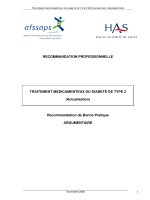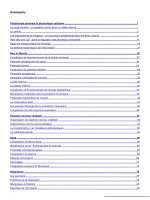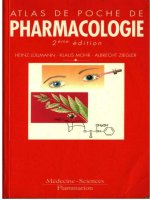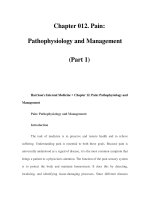Emergencies in Urology - part 1 pptx
Bạn đang xem bản rút gọn của tài liệu. Xem và tải ngay bản đầy đủ của tài liệu tại đây (1.58 MB, 68 trang )
M. Hohenfellner · R.A. Santucci (Eds.) Emergencies in Urology
M.Hohenfellner·R.A.Santucci(Eds.)
Emergencies in Urology
With 312 Figures and 161 Tables
Markus Hohenfellner, MD
Professor and Chairman
Department of Urology
Heidelberg University, Medical School
69120 Heidelberg, Germany
Richard A. Santucci, MD
Chief of Urology, Detroit Receiving Hospital
Associate Professor, Wayne State University School of Medicine
4160 John R., Suite 1017
Detroit, MI 48201, USA
ISBN 978-3-540-48603-9 Springer-Verlag Berlin Heidelberg New York
Library of Congress Control Number: 2006938751
This work is subject to copyright. All rights are reserved, whether the whole or part of the
material is concerned, specifically the rights of translation, reprinting, reuse of illustrations,
recitation, broadcasting, reproduction on microfilm or in any other way, and storage in data
banks. Duplication of this publication or parts thereof is permitted only under the provisions
of the German Copyright Law of September 9, 1965, in its current version, and permission for
use must always be obtained from Springer-Verlag. Violations are liable for prosecution under
the German Copyright Law.
Springer is a part of Springer Science+Business Media
Springer-Verlag Berlin Heidelberg 2007
Printed in Germany
The use of general descriptive names, registered names, trademarks, etc. in this publication
does not imply, even in the absence of a specific statement, that such names are exempt from
therelevantprotectivelawsandregulationsandthereforefreeforgeneraluse.
Product liability: The publishers cannot guarantee the accuracy of any information about the
application of operative techniques and medications contained in this book. In every individual
case the user must check such information by consulting the relevant literature.
Editor: Dr. Ute Heilmann
Desk Editor: Meike Stoeck
Copy-editing: WS Editorial Ltd, Shrewsbury, UK
Illustrations: Stephan Spitzer, Frankfurt, and
Reinhold Henkel, Heidelberg,
Production Editor: Joachim W. Schmidt
Cover design: eStudio Calamar, Spain
Typesetting: FotoSatz Pfeifer GmbH, D-82166 Gräfelfing
Printedonacid-freepaper–24/3150–543210
The copyright on the following illustrations created by Stephan Spitzer and Reinhold Henkel
is hold by the editor Markus Hohenfellner:
Fig. 6.1, 6.2; 15.4.6; 15.4.14–17; 15.5.1; 15.5.4; 15.5.6–12; 15.6.1–6; 15.9.1; 15.9.14; 15.9.15;
15.9.17; 16.1; 16.3–5; 17.1.5–8; 17.1.10–14; 17.1.16; 17.2.5; 17.4.1; 18.5.1–4; 18.5.7; 19.11;
19.16; 21.11.1–4; 21.12.1.
To Ulr ike and Chr istine
Preface
Emergencies in medicine are difficult on two fronts: they may challenge both the
health of the patient and the skills of the doctor in charge. If the latter, the former
may deteriorate rapidly. Thus, the definition of an emergency indeed depends on
who is facing it. As we mature along our clinical pathways of education, training, and
experience, the risk of going through a personal professional emergency is continu-
ously reduced. Nevertheless, throughout our medical career, accurate self-assess-
ment and subsequent control of our actions remain our most important qualities.
This is true especially for anybody who endeavors into a surgical field.
This book focuses on both kinds of emergencies. It works to facilitate anticipation
of potential situations, and therefore allow their competent management. This aim
hasonlybecomepossiblewiththesupportofsomeofthemostdistinguishedurolo-
gists for this project. They contributed their rich experience not only in the classical
form of textbook chapters but also by narrating their personal Armageddons as
open-styled vignettes. These short stories are an impressive proof that persistent
awareness and education are essential elements of a successful professional life. They
also relay a golden rule to all of our readers, who still have the privilege to call some-
body if needed: if in doubt – just do it. The so-called four big Cs: climb, communi-
cate,confess,andcomplyarethebasicactionsforanypilotindistressandtheymay
just be as applicable for any doctor facing a difficult situation that may exceed his ex-
perience and abilities. Our pride must be to consistently achieve the same result: sa-
lus aegroti suprema lex –onlythebestforourpatients.
At this point, we want to extend our sincere thanks to the authors who have partic-
ipated in this book. All of them are extremely busy, internationally renowned clini-
cians. Nonetheless, their effort and dedication to make Emergencies in Urology pos-
sible have surpassed all expectations, not only by the superb quality of the manu-
scripts but also by the timeliness and enthusiasm of their cooperation.
Special thanks are also extended to Stephan Spitzer, whose outstanding art and
understanding of the author’s picturesque suggestions created many of the ever-so-
crucial illustrations.
The editors wish to thank the publishers at Springer-Verlag for a fantastic job. We
areespeciallyindebtedtoourDeskEditor,MeikeStoeck,whowasinnearlydaily
contactwithusforyears.Shehelpedusimmeasurablytostayontime,onthejob,and
on focus. The final result has been inestimably improved by her efforts.
Markus Hohenfellner
Richar d A. Santucci
The artwork in this volume
was kindly sponsored by:
Astellas 81606 München, Germany
Ethicon 22861 Norderstedt, Germany
Farco-Pharma GmbH 50670 Köln, Germany
SIEMENS Medical Solutions 91052 Erlangen, Germany
KARL STORZ GmbH & Co. KG 78532 Tuttlingen, Germany
Takeda Pharma GmbH 52066 Aachen, Germany
Richard Wolf GmbH 75438 Knittlingen, Germany
The Editors
Markus Hohenfellner, MD
Dr. Hohenfellner is Professor of Urology and Chair of The Department of Urology of
the University of Heidelberg, Medical School. His institution is consequently orga-
nized to function in a high-level interdisciplinary environment and addresses all the
contemporary clinical challenges: urologic oncology, minimally invasive surgery, re-
constructive surgery, pediatric urology, lower urinary tract dysfunction, stone dis-
ease, and andrology.
Dr. Hohenfellner is chairman of the EAU Working Group on Urologic Trauma. He
is also the chief representative of the German Urological Association to establish
guidelines on Urologic Trauma.
Richard A. Santucci, MD, FACS
Dr. Santucci is the Chief of Urology at the Detroit Receiving Hospital, one of the na-
tion’s first Level I trauma centers and the only hospital built from the ground up to
serveasatraumahospital.HeisanAssociateProfessoratWayneStateUniversity
and is a widely published expert in the field of trauma and emergency urology.
Dr. Santucci also serves as the Director of the Center for Urologic Reconstruction
at Detroit Receiving Hospital. The Center is a regional referral center for difficult
cases in urologic reconstruction, including urethral injury, urethral stricture, and
complex reconstructive problems of the bladder, ureters and kidneys.
Contents
1 Urologic Emergencies: Overview
S.P. Elliott, J.W. McAninch 1
2 The Clinical Approach to the Acutely Ill Patient
S.Buse,R.Santucci,M.Hohenfellner 2
2.1 Diagnosis 2
2.2 History 3
2.3 PhysicalExamination 3
2.4 LaboratoryTesting 4
2.5 Imaging 4
References 6
3 New Developments in Anesthesia
J. Motsch, Ch. Schramm, E. Martin 8
3.1 PerioperativeCardiacComplications 8
3.2 DeepVeinThrombosisandPulmonaryEmbolism 15
3.3 Shock 17
3.4 Sepsis 18
3.5 IntensiveCareProcedures 20
3.6 Intraoperative-andPostoperativeProcedures 25
3.7 PerioperativeManagementofJehovah’sWitnesses 27
References 30
4Anaphylaxis
P. B a d e r , D. F r o h n e b e r g 32
4.1 Definition 32
4.2 ImmunologicalMechanism 32
4.3 ClinicalPresentationandDifferentialDiagnosis 33
4.4 DiagnosticTestsandRiskFactors 34
4.5 PreventionandTreatmentofAnaphylacticReactions 35
4.6 TheRoleofSkinandProvocationTests 36
4.7 ImmediateandNonimmediateReactionstoContrastMedia 37
4.8 ReactionstoPerioperativeDrugs 40
4.9 LatexAllergy:DiagnosisandManagement 42
References 43
5Urosepsis
H.G. Schiefer, Th. Diemer, W. Weidner 45
5.1 Definition 45
5.2 EpidemiologyofSepsis 45
5.3 EtiologyofUrosepsis 45
5.4 Pathophysiology 45
5.5 ClassificationSystem 46
5.6 RiskFactorsforUrosepsis 47
5.7 ClinicalSymptoms 47
5.8 DiagnosticProcedures 47
5.9 Microbiology 48
5.10 FurtherDiagnosticProcedures 48
5.11 Therapy 48
References 49
6Fournier’sGangrene
Ch.F.Heyns,P.D.Theron 50
6.1 DefinitionandHistoricalPerspective 50
6.2 Etiology 50
6.3 Anatomy 52
6.4 Microbiology 53
6.5 Pathogenesis 54
6.6 ClinicalPresentation 55
6.7 SpecialInvestigations 55
6.8 Management 55
6.9 Complications 59
6.10 Prognosis 59
References 59
7 Urologic Emergencies in Pregnant Women: Special Considerations
J.F. Hermieu, L. Boccon-Gibod 61
7.1 Introduction 61
7.2 AnatomicalandPhysiologicalModificationsDuringPregnancy 61
7.3 DiagnosticProceduresinthePregnantPatient 62
7.4 Treatment 64
7.5 Particular Treatments of Certain Urological Emergencies in Pregnant
Women 67
7.6 Conclusion 70
References 70
8 Urologic Emergencies in Children: Special Considerations
A. Cook, A.E. Koury 73
8.1 Introduction 73
8.2 Adrenal 73
8.3 Kidney 75
8.4 Bladder 84
8.5 ExternalGenitalia 89
References 97
9 Autonomic Dysreflexia and Emergencies in Neurogenic Bladder
B. Wefer, K P. Jünemann 101
9.1 AutonomicDysreflexia 101
9.2 NeurogenicBladderandSpinalShock 103
References 103
10 Failure of Urinary Drainage: Upper Urinary
M.T. Gettman, J.W. Segura 104
10.1 Introduction 104
10.2 PresentingSignsandSymptoms 104
10.3 DiagnosticEvaluation 105
10.4 AcuteUrologicManagement 111
10.5 DelayedDefinitiveInterventions 116
10.6 Conclusion 116
References 116
XIV Contents
11 Failure of Urinary Drainage: Lower Tract
J.M. Patterson, C.R. Chapple 118
11.1 Introduction 118
11.2 TheMalePatient 118
11.3 TheFemalePatient 129
References 130
12 Scrotal Emergencies
V. M a s t e r 132
12.1 Introduction 132
12.2 Testis 133
12.3 ParatesticularEmergencies 136
12.4 Spermatocele 137
12.5 Varicocele 138
12.6 Trauma 139
12.7 ParatesticularMasses 139
12.8 ScrotalWallProblems 139
12.9 Miscellaneous 141
12.10 SummaryofDiagnosticWorkup 141
References 141
13 Oncologic Emergencies
N E.B.Jacobsen,S.D.W.Beck,R.S.Foster 142
13.1 Introduction 142
13.2 SpontaneousPerinephricHemorrhage 142
13.3 HypercalcemiaofMalignancy 144
13.4 Complications of Bacille Calmette-Gu´erinTherapy 146
13.5 MalignantSpinalCordCompression 148
13.6 Neutropenia 151
13.7 IntractableBladderHemorrhage 154
13.8 UreteralObstruction 159
13.9 BladderOutletObstruction 162
13.10 RespiratoryComplications 165
References 166
14 Urologic Paraneoplastic Syndromes
R. Tiguert, Y. Fradet 172
14.1 RenalCellCarcinoma 172
14.2 ProstateCancer 176
14.3 BladderCancer 179
14.4 TesticularCancer 179
14.5 PenileCancer 180
14.6 Conclusion 180
References 180
15 Trauma
15.1 Urologic Trauma: General Considerations
S.P. Elliott, J.W. McAninch 183
15.1.1 IatrogenicInjury 183
15.1.2 ExternalTrauma 184
References 184
15.2 Modern Trauma: New Mechanisms of Injury Due to Terrorist Attacks
N.D.Kitrey,A.Nadu,Y.Mor 185
15.2.1 Introduction 185
Contents XV
15.2.2 MechanismsofExplosiveInjury 186
15.2.3 CharacteristicsofTerrorist-RelatedBlastInjuries 186
15.2.4 CharacteristicsofTerrorist-RelatedGunshotInjuries 187
15.2.5 MedicalManagementofTerrorist-RelatedInjuries 187
15.2.6 UrologicalAspectsofTerrorist-RelatedInjuries 188
15.2.7 Summary 190
References 190
15.3 Mass Casualties: Urologic Aspects of Triage and Definitive Management
A. Nadu, N.D. Kitrey, Y. Mor 192
15.3.1 MassCasualties 192
15.3.2 Mechanisms of Injury and Specific Urological Injuries
inMassCasualtyEvents 194
15.3.3 TheUrologicApproachinMassCasualtyEvents 195
References 200
15.4 Renal Trauma
E. Serafetinides 201
15.4.1 Anatomy 201
15.4.2 IatrogenicVascularInjuries 202
15.4.3 RenalTransplantation 202
15.4.4 PercutaneousRenalProcedures 203
15.4.5 RenalInjuries 205
15.4.6 ForeignBodies 217
15.4.7 SpontaneousRetroperitonealHaemorrhage 217
References 218
15.5 Trauma of the Ureter
J. Pfitzenmaier, Ch. Gilfrich, A. Haferkamp, M. Hohenfellner 233
15.5.1 Anatomy 233
15.5.2 ClinicalDiagnosis 234
15.5.3 RadiographicDiagnosis 234
15.5.4 IntraoperativeDiagnosis 234
15.5.5 ExternalTrauma 235
15.5.6 Iatrogenic/IntraoperativeTrauma 235
15.5.7 TechniquesofTraumaRepair 237
15.5.8 UreteroureterostomyandPrimaryClosure 238
15.5.9 UreterocalycostomyandPyeloplasty 239
15.5.10 TransureteroureterostomyandTransureteropyelostomy 239
15.5.11 PsoasHitch 239
15.5.12 BoariFlap 241
15.5.13 IntestinalReplacementoftheUreter 241
15.5.14 AutotransplantationoftheKidney 243
15.5.15 Nephrectomy 243
15.5.16 StrictureRepair 243
15.5.17 Future 244
References 244
15.6 Bladder Trauma
N.L. Türkeri 246
15.6.1 Introduction 246
15.6.2 EtiologyandIncidence 246
15.6.3 Classification 249
15.6.4 RiskFactors 252
15.6.5 Diagnosis 252
15.6.6 Treatment 255
XVI Contents
15.6.7 DamageControl 256
References 257
15.7 Genital Trauma
E.Plas,I.Berger 260
15.7.1 Introduction 260
15.7.2 PathophysiologyofTraumatoExternalGenitalia 261
15.7.3 DiagnosisandManagementofGenitalTrauma 264
15.7.4 BluntTraumaoftheMaleGenitalia 264
15.7.5 TreatmentofExternalGenitalTrauma 265
References 267
15.8 Management of Penile Amputation
G.H. Jordan 270
15.8.1 Introduction 270
15.8.2 HistoryofPenileReplantation 271
15.8.3 AnatomyofthePenis 271
15.8.4 PenileReplantation 272
15.8.5 Summary 274
References 274
15.9 Urethral Trauma
L. Mart´ınez-Pi˜neiro 276
15.9.1 AnatomicalandEtiologicalConsiderations 276
15.9.2 Diagnosis:InitialEmergencyAssessment 282
15.9.3 Management 284
15.9.4 RecommendationsforTreatment:Algorithms 293
References 295
16 Priapism
W.O. Brant, A.J. Bella, M.M. Gracia, T.F. Lue 301
16.1 Introduction 301
16.2 Classification 302
16.3 Etiology 302
16.4 Evaluation 303
16.5 Management 304
16.6 SurgicalTreatmentofIschemicPriapism 305
16.7 PostoperativeCare 308
16.8 TreatmentofNonischemicPriapism 308
16.9 Recurrent(Stuttering)Priapism 309
16.10 MechanicalPriapism 310
16.11 Conclusion 310
Appendix 310
References 311
17 Intraoperative Complications
17.1 Management of Intraoperative Complications in Open Procedures
G.H.Yoon,J.Stein,D.G.Skinner 313
17.1.1 Introduction 313
17.1.2 VascularComplications 314
17.1.3 IntestinalComplications 319
17.1.4 SolidOrganInjury 323
17.1.5 Conclusion 326
References 326
Contents XVII
17.2 Complications in Endoscopic Procedures
F. Wimpissinger, W. Stackl 327
17.2.1 ComplicationsofPercutaneousNephrolithotomy 327
17.2.2 ComplicationsofUreterorenoscopy 331
References 334
17.3 TUR-Related Complications
N. Zantl, R. Hartung 335
17.3.1 IntraoperativeComplicationsDuringTURP 336
17.3.2 PostoperativeEmergenciesAfterTURP 343
17.3.3
Intraoperative and Early Postoperative Complications During TURB
344
References 347
17.4 Complications in Laparoscopic Surgery
M. Muntener, F.R. Romero, L.R. Kavoussi 349
17.4.1 Introduction 349
17.4.2 IntraoperativeComplications 349
17.4.3 PostoperativeComplications 359
References 361
18 Postoperative Complications
18.1 Acute Postoperative Complications
M. Seitz, B. Schlenker, Ch. Stief 364
18.1.1 PostoperativeBleeding 364
18.1.2 ChestPainandDyspnea 373
18.1.3 AcuteAbdomen 377
18.1.4 PostoperativeFever 378
18.1.5 AbdominalWoundDehiscence 403
18.1.6 ChylousAscites 410
18.1.7 DeepVenousThrombosis 414
18.1.8 Lymphoceles 416
References 421
18.2 Preventing and Managing Infectious Emergencies of Urologic Surgery
T.J.Walsh,M.A.Dall’Era,J.N.Krieger 430
18.2.1 Introduction 430
18.2.2 SurgicalSiteInfections 430
18.2.3 UrinaryTractInfectionsComplicatingUrologicalProcedures 437
References 441
18.3 Emergencies in Continent Bladder Replacement
M.Schumacher,F.C.Burkhard,U.E.Studer 444
18.3.1 Introduction 444
18.3.2 ContinentUrinaryDiversion 444
18.3.3 Diversion-RelatedEmergencies 444
18.3.4 EmergenciesNotRelatedtoDiversion 448
18.3.5 Conclusions 449
References 450
18.4 Emergencies Following Renal Transplantation
M.A. Ghoneim, A.A. Shokeir 451
18.4.1 Introduction 451
18.4.2 TheLivingDonor:SurgicalEmergencies 451
18.4.3 Recipients:SurgicalandNonsurgicalEmergencies 452
References 464
XVIII Contents
18.5 Open Salvage Surgery
C. Wotkowicz, M.A. Jacobs, J.A. Libertino 466
18.5.1 Introduction 466
18.5.2 Indications 466
18.5.3 InfectiousPeritonitis 468
18.5.4 PostoOperativeBleeding 476
18.5.5 StomalComplications 478
18.5.6 BowelObstruction 479
18.5.7 Dehiscence 480
18.5.8 AbdominalCompartmentSyndrome 481
18.5.9 CutaneousUreterostomy 482
18.5.10Conclusions 483
References 483
19 Surgical Techniques: Endoscopic and Percutaneous Procedures
J.S. Wolf Jr. 486
19.1 LowerUrinaryTract 486
19.2 UpperUrinaryTract 491
20 Interventional Radiology in Emergencies in Urology
J.E. Wildberger, R.W. Günther 496
20.1 TranscatheterEmbolization 496
20.2 Transcatheter Lysis and Thrombectomy in Renal Artery Occlusion . . . . 501
20.3 PTAandStenting 502
20.4 PercutaneousDrainage 505
20.5 PercutaneousNephrostomy 509
20.6 FailureofTransplantKidney 511
References 512
21 Selected Case Reports and Personal Experience 517
21.1 Percutaneous Approach for Difficult Stones
S.Arap,M.A.Arap 519
21.2 The Relaxing Incision for Priapism
C.F. Donatucci 521
21.3 Priapism Redux
W.O. B r a nt 522
21.4 Iatrogenic Pathology, Undiversion, Contralateral Renal Autotransplantation
J.M. Gil-Vernet 523
21.5 Deferred Emergency Surgery of Total Rupture of the Posterior Urethra
J.M. Gil-Vernet 526
21.6 Surgery of Complicated Horseshoe Kidney
J.M. Gil-Vernet 530
21.7 Cold Fire
Ch.F. Heyns 534
21.8 Lost in the Kidney
M. Hohenfellner 536
21.9 A Rare Accident
R. Hohenfellner 537
21.10 Appendectomy
R. Hohenfellner 539
Contents XIX
21.11 Posterior Sagittal Approach in Pediatric Urology
F. Iko m a 541
21.12 Postoperative Urinary Retention After Hypospadias Repair
F. Iko m a 548
21.13 Hairs in the Urethra of a Hypospadias Patient
F. Iko m a 549
21.14 A Tale of Two Brothers
W. M å n s s on 550
21.15 Unfortunate Honeymoon Under the Palm Trees
J.A. Mart´ınez-Pi ˜neiro 552
21.16 Intravenous Uroperitoneogram
J.A. Mart´ınez-Pi ˜neiro 554
21.17 Coitus Interruptus
J.A. Mart´ınez-Pi ˜neiro 555
21.18 Exploding Bladder
J. Motsch, Ch. Schramm 556
21.19 Education by Humiliation
A.R. Mundy 557
21.20 Vena Caval Injury
C.A. Olsson 558
21.21 False Sepsis and Advanced TCC
C.A. Olsson 559
21.22 Laparoscopic Vascular Emergency
V. Pa n s a d o r o 560
21.23 Percutaneous Nephrolithotomy
E. Perez-Castro E. 561
21.24 Bladder Tumor
E. Perez-Castro E. 562
21.25 Frenulum
E. Perez-Castro E. 563
21.26 Penile Fracture Associated with Urethral Rupture and Its Complex Repair
S.V. Perovic 564
21.27 Low-Flow Priapism in Children
S.V. Perovic 566
21.28 Tragic Complications of Missed Urethral Injury
E. Pontes 568
21.29 Keep Looking
R. Santucci 569
21.30 WhatGoesinMustComeOut
R. Santucci 570
21.31 Metabolic Dangers of the Neobladder
M.Schumacher,U.E.Studer 571
21.32 Torsion After Minor Insult
E. Serafetinides 572
XX Contents
21.33 Fleas and LiceattheSameTime
E. Serafetinides 573
21.34 Continent Urinary Diversion for the Treatment of Urinary Fistulae
Through a Sacral Scar in a Paraplegic Patient
F. Tr igo-Ro cha 574
21.35 Entrapped Foley Catheter After Radical Prostatectomy
N.L. Türkeri 576
21.36 Unexpected Inferior Vena Caval Thrombus
E.D. Vaughan, Jr. 577
21.37 The Lord of the Rings – Fournier’s Gangrene as a Consequence of
Strangulating Testicular Rings
N. Zantl, R. Hartung 578
Overall Reference List 583
Subject Index 649
Contents XXI
List of Contributors
Arap, Marco A., MD
Assistant Professor of Urology
University of S˜ao Paulo
School of Medicine
Av. Dr. Eneas de Carvalho Aguiar 255
05422-970, S˜ao Paulo, SP, Brazil
Arap, Sami, MD
Professor Emeritus of Urology
University of S˜ao Paulo
School of Medicine
Av. Dr. Eneas de Carvalho Aguiar 255
05422-970, S˜ao Paulo, SP, Brazil
Bader, Pia, MD
Urologische Klinik, Städtisches Klinikum Karlsruhe
Moltkestraße 90
76133 Karlsruhe, Germany
Beck,StephenD.W.,MD,FACS
Assistant Professor of Urology
Department of Urology
Indiana University
Indiana Cancer Pavilion
535 N Barnhill Dr
Indianapolis, IN 46202, USA
Bella, Anthony J., MD, FRCSC
Clinical Instructor and American Urological Association
Foundation Robert J. Krane Scholar
University of California, San Francisco
400 Parnassus Ave, A633
San Francisco, CA 94143-0738, USA
Berger, Ingrid, MD
Resident for Urology
Department of Urology and Andrology
Donauspital
Langobardenstraße 122
1220 Vienna, Austria
Boccon-Gibod, Laurent, MD
Professor of Urology
Hˆopital Bichat
Clinique Urologique
46 rue Henri Huchard
Paris 75018, France
Brant, William O., MD
Northstar Urology
PO Box 40,000
Vail, CO 81658, USA
Burkhard, Fiona, MD
Klinik und Poliklinik für Urologie
Universitätsspital Bern
Inselspital
Freiburgstrasse
3010 Bern, Switzerland
Buse, Stephan, MD
Member of the Faculty
Department of Urology
University of Heidelberg, Medical School
69120 Heidelberg, Germany
Chapple, Christopher R., BSc, MD, FRCS, FEBU
Professor of Urology
Section of Female and Reconstructive Urology
and Urodynamics
Dept. of Urology
Royal Hallamshire Hospital
Glossop Road
Sheffield, S10 2JF, UK
Cook,Anthony,BSc,MD,FRCSC,FAAP
Assistant Clinical Professor
Division of Pediatric Surgery
University of Calgary
Pediatric Urology Fellowship Director
Alberta Children’s Hospital
Calgary, Alberta
Dall’Era, Marc A., MD
Dept. of Urology
University of Washington School Medicine
Seattle, WA 98125, USA
Diemer, Thorsten, MD
Universitätsklinikum Gießen und Marburg GmbH
Klinik und Poliklinik für Urologie und
Kinderurologie
Rudolf-Buchheim-Straße 7
35385 Gießen, Germany
Donatucci, Craig F., MD
Associate Professor and Vice-Chair
Deptartment of Surgery
Division of Urology
Duke University Medical Center
DUMC 3274
Durham, NC 27710, USA
Elliot, Sean P., MD
Professor of Urology
Fellow in Urologic Trauma and Reconstruction
San Francisco General Hospital
1001 Potrero Avenue, 3A-20
San Francisco, CA 94110, USA
Foster,RichardS.,MD,FACS
Professor of Urology
Department of Urology
Indiana University
Indiana Cancer Pavilion
535 N Barnhill Dr
Indianapolis, IN 46202, USA
Fradet, Yves, MD
D´epartement de Chirurgie (Urologie)
Hotel Dieu Hospital
11 Cˆote du Palais
Qu´ebec, Qu´ebec G1R 2J6, Canada
Frohneberg Detlef, MD
Professor of Urology
Urologische Klinik, Städtisches Klinikum Karlsruhe
Moltkestraße 90
76133 Karlsruhe, Germany
Gettman, Matthew T., MD
Mayo Clinic
Department of Urology
200 First Street, SW
Rochester, MN 55905, USA
Ghoneim, Mohamed A., MD
Professor of Urology
Urology and Nephrology Center
Mansoura University
Mansoura, Egypt
Gilfrich,Christian,MD
Department of Urology
University of Heidelberg, Medical School
69120 Heidelberg, Germany
Gil-Vernet, Jos´eM.,MD
ProfessorandChairofUrology
Chair of Urology
Centro Medico Teknon
Vilana, 12
08022 Barcelona, Spain
Gracia, Maurice M., MD
Chief Resident
Dept. of Urology
400 Parnassus Ave, A-633
San Francisco, CA 94143-0738, USA
Günther, Rolf W., MD
Dept. of Diagnostic Radiology
University Hospital
University of Technology
Pauwelsstraße 30
52074 Aachen, Germany
Haferkamp, Axel, MD
Associate Professor of Urology
Senior Faculty
Department of Urology
Heidelberg University, Medical School
69120 Heidelberg, Germany
Hartung, Rudolf, MD
Professor Emeritus of Urology
Urologische Klinik und Poliklinik
Technische Universität München
Ismaninger Str. 22
81675 Munich, Germany
Hermieu, Jean Francois, MD
Hˆopital Bichat
Clinique Urologique
46 rue Henri Huchard
Paris 75018, France
Heyns, Christiaan F., MD
Department of Urology
University of Stellenbosch and Tygerberg Hospital
P.O. Box 19063
Tygerberg 7505
South Africa
Hohenfellner, Markus, MD
Professor and Chairman
Department of Urology
Heidelberg University, Medical School
69120 Heidelberg, Germany
Hohenfellner, Rudolf, MD
Professor Emeritus of Urology
Department of Urology
Johannes Gutenberg University
Langenbeckstraße 1
55101 Mainz, Germany
Ikoma, Fumihiko, MD
Professor Emeritus of Urology
18-27, Higashiyama-cho
659-0091 Ashiya, Japan
XXIV List of Contributors
Jacobs,Micah,MD
The Department of Urology
Lahey Clinic
Burlington, MA 01805, USA
Jacobsen, Niels-Erik B., MD, FRCSC
Fellow, Urologic Oncology
Department of Urology
Indiana University School of Medicine
Indiana Cancer Pavilion
535 N Barnhill Dr
Indianapolis, IN 46202, USA
Jordan, Gerald H., MD
Professor of Urology
Eastern Virginia Medical School
400 W. Brambleton Ave., # 100
Norfolk, VA 23510, USA
Jünemann, Klaus-Peter, MD
Professor and Chairman
Klinik für Urologie und Kinderurologie
Universitätsklinikum Schleswig-Holstein, Campus Kiel
Arnold-Heller-Straße 7
24105 Kiel, Germany
Kavoussi,LouisR.,MD
The Department of Urology
Johns Hopkins Hospital
600 N. Wolfe Street, Suite 161
Jefferson Street Building
Baltimore, MD 21287, USA
Khoury, Antoine Elie, MBBCH, FRCSC
Professor
Department of Surgery
The University of Toronto
Division of Urology
Hospital for Sick Children
555 University Avenue
Toronto, ON M5G 1X8, Canada
Kitrey, Noam D., MD
Department of Urology
Sheba Medical Center
Tel-Hash omer
52621 Ramat-Gan, Israel
Krieger, John N., MD
Department of Urology
University of Washington School of Medicine
Seattle, WA 98125, USA
Libertino, John, A., MD
Lahey Clinical Medical Center
41 Mall Rd.
Burlington, MA 01805-0001, USA
Lue, Tom F., MD
Professor of Urology
Department of Urology
400 Parnassus Ave, A-633
San Francisco, CA 94143-0738, USA
Månsson, Wiking MD, PhD
Department of Urology
University Hospital
22100 Lund, Sweden
Martin, Eike, MD
Professor and Chairman
Department of Anesthesiology
University of Heidelberg, Medical School
Im Neuenheimer Feld 110
69120 Heidelberg, Germany
Mart´ınez-Pi˜neiro, Jos´eA.,MD,PhD
Professor of Urology
Clinica La Luz, Former Head
Department Urology
Hospital Universitario La Paz
Avenida de San Luis 95
Madrid 28033, Spain
Mart´ınez-Pi˜neiro, Luis, MD, PhD, FEBU
Urology Department
La Paz University Hospital
Paseo Castellana 261
28046 Madrid, Spain
Master,VirajA.,MD,PhD
Assistant Professor
Department of Urology
Emory University
1365 Clifton Road, N.E., Building B
Atlanta, GA 30322, USA
McAninch, Jack W., MD
Professor of Urology, Chief of Urology
San Francisco General Hospital
1001 Potrero Avenue, 3A-20
San Francisco, CA 94110, USA
Mor, Yoram, MD
Department of Urology
Sheba Medical Center
Tel-Hashomer
52621 Ramat-Gan, Israel
Motsch, Johann, MD
Professor of Anesthesiology
Department of Anesthesiology
University of Heidelberg, Medical School
Im Neuenheimer Feld 110
69120 Heidelberg, Germany
List of Contributors XXV
Mundy, Tony, AR
Professor of Urology
Trust Headquarters
University College London Hospitals
NHS Foundation Trust
250 Euston Road
London NW1 2PG, UK
Muntener, Michael, MD
Department of Urology
Johns Hopkins Hospital
600 N. Wolfe Street
Baltimore, MD 21287, USA
Nadu, Andrei, MD
Department of Urology
Sheba Medical Center
Tel-Hash omer
52621 Ramat-Gan, Israel
Olsson, Carl A., MD
Columbia University Medical Center
Department of Urology
Herbert Irving Pavilion
161 Fort Washington Ave.
New York, NY 10032, USA
Pansadoro, Vito, MD
Professor of Urology
Vincenzo Pansadoro Foundation
Via Aurelia 559
00165 Rome, Italy
Patterson, Jacob M., MBCHB, MRCS
Section of Female and Reconstructive Urology
and Urodynamics
Dept. of Urology
Royal Hallamshire Hospital
Glossop Road
Sheffield, S10 2JF, UK
Perez-Castro, Ellendt E., MD
Department of Urology
C/General Rodrigo, 8
28003 Madrid, Spain
Perovic, Sava, MD
Department of Urology
University Children’s Hospital
Tirsova 10
11000 Belgrade, Serbia and Montenegro
Pfitzenmaier,Jesco,MD
Associate Professor
Department of Urology
University of Heidelberg
Im Neuenheimer Feld 110
69120 Heidelberg, Germany
Plas, Eugen, MD
Associate Professor of Urology and Andrology
Department of Urology and Ludwig Boltzmann
Institute for Urology and Andrology
Hietzing Hospital
Wolkersbergenstr. 1
1130 Vienna, Austria
Pontes,J.Edson
Department of Urology
Way ne State University
4160 John P. Denort, 41 I 48201, USA
Romero, Frederico R., MD
The Department of Urology
Johns Hopkins Hospital
600 N. Wolfe Street, Suite 161
Jefferson Street Building
Baltimore, MD 21287, USA
Santucci,RichardA.,MD,FACS
Associate Professor
Way ne State University School of Medicine
Department of Urology
4160 John R., Suite 1017
Detroit, MI 48201, USA
Schiefer, Hans Gerd, MD
Professor
Medizinische Mikrobiologie
Universitätsklinikum Gießen und Marburg
Schubertstraße 1
35392 Gießen, Germany
Schlenker, Boris, MD
Urologische Klinik und Poliklinik
Klinikum der Universität München – Großhadern
Ludwig-Maximilians-Universität München
Marchioninistraße 15
81377 Munich, Germany
Schramm, Christoph, MD
Department of Anesthesiology
University of Heidelberg, Medical School
Im Neuenheimer Feld 110
69120 Heidelberg, Germany
Schumacher, Martin C., MD
Klinik und Poliklinik für Urologie
Universitätsspital Bern
Inselspital
Freiburgstrasse
3010 Bern, Switzerland
Segura, Joseph W., MD
Mayo Clinic
Department of Urology
200 First Street, SW
Rochester, MN 55905, USA
XXVI List of Contributors
Seitz, Michael, MD
Urologische Klinik und Poliklinik
Klinikum der Universität München – Großhadern
Ludwig-Maximilians-Universität München
Marchioninstraße 15
80336 Munich, Germany
Serafetinides, Ephraim, MD
Department of Urology
General Hospital ‘Asklipieion’ Voula
Vas . Pavlou 1
16673 Voula, Greece
Shokeir,AhmedA.,MD,PhD,FEBU
Urology and Nephrology Center
Mansoura University
Mansoura, Egypt
Skinner, Donald G., MD
Chairman and Professor of Urology
Department of Urology
University of Southern California
USC/Norris Cancer Center
1441 Eastlake Avenue
Los Angeles, CA 90089-9178, USA
Stackl, Walter, MD
Professor of Urology
Urologische Abteilung Rudolfstiftung
Juchgasse 25
1030 Vienna, Austria
Stein, John P., MD, FACS
Associate Professor of Urology
Department of Urology
University of Southern California
USC/Norris Cancer Center
1441 Eastlake Avenue
Los Angeles, CA 90089-9178, USA
Stief, Christian, MD
Professor of Urology
Urologische Klinik und Poliklinik
Klinikum der Universität München – Großhadern
Ludwig-Maximilians-Universität München
Marchioninstraße 15
80336 Munich, Germany
Studer,UrsE.,MD
Professor of Urology
Klinik und Poliklinik für Urologie
Universitätsspital Bern
Inselspital
Freiburgstrasse
3010 Bern, Switzerland
Theron, Pieter D., MD
Department of Urology
University of Stellenbosch and Tygerberg Hospital
P.O. Box 19063
Tygerberg 7505, South Africa
Tiguert, Rabi, MD
Centre de recherche l’Hotel-Dieu Quebec
Centre hospitalier universitaire de Quebec
11, Cote-du-Palais, Quebec G1R2J6, Canada
Trigo-Rocha, Flavio, MD
Associate Professor of Urology
Division of Urology
Sao Paulo University
Sao Paulo, Brazil
Türkeri, N. Levent, MD, PhD
Professor of Urology
Marmara University Hospital
Department of Urology
Tophaneliolu Cad. No. 13 – 15
Altunizade 34662
Istanbul, Turkey
Vaughan, Darracott Edwin Jr, MD
Department of Urology
Weill Cornell University
525 East 68
th
Street
New York, NY 10021, USA
Walsh, Thomas J., MD, MS
Dept. of Urology
University of Washington School Medicine
Seattle, WA 98125, USA
Wefer, Björn, MD
Klinik für Urologie und Kinderurologie
Universitätsklinikum Schleswig-Holstein
Campus Kiel
Arnold-Heller-Str.7
24105 Kiel, Germay
Weidner, Wolfgang, MD
Professor of Urology
Universitätsklinikum Gießen und Marburg GmbH
Klinik und Poliklinik für Urologie und
Kinderurologie
Rudolf-Buchheim-Straße 7
35385 Gießen, Germany
Wildberger, Joachim E., MD
Dept. of Diagnostic Radiology
University Hospital
University of Technology
Pauwelsstraße 30
52074 Aachen, Germany
List of Contributors XXVII
Wimpissinger, Florian, MD, FEBU
Urologische Abteilung Rudolfstiftung
Juchgasse 25
1030 Vienna, Austria
Wolf,J.Stuart,Jr.,MD
Professor of Urology
University of Michigan
1500 E. Medical Center Dr.
TC 3875
Ann Arbor, MI 48109-0330, USA
Wotkowicz, Chad, MD
Department of Urology
Lahey Clinic
Burlington, MA 01805, USA
Yoon, Gerald H., MD
Department of Urology
University of Southern California
USC, Norris Cancer Center
1441 Eastlake Avenue
Los Angeles, CA 90089-9178, USA
Zantl, Niko, MD
Associate Professor of Urology
Urologische Klinik und Poliklinik
Technische Universität München
Ismaninger Str. 22
81675 Munich, Germany
XXVIII List of Contributors
1Urologic Emergencies: Overview
S.P. Elliott, J.W. McAninch
Compared to other surgical fields there are relatively
few emergencies in urology. For this reason we may be-
come unaccustomed to caring for the acutely ill patient.
Therefore, it is important to keep certain guiding prin-
ciples in mind when confronted with a patient with an
emergent urologic condition.
First, remember that emergencies in urology are
rarely life-threatening. Even some of the most concern-
ing conditions such as pyonephrosis or renal trauma
are urgent but usually not emergent. Remembering this
principle will prevent one from making rushed deci-
sions about management. Important questions to con-
sider before acting are:
1. Is the patient well enough to undergo an opera-
tion?
2. Will an operation improve the situation or is a
minimallyinvasiveapproachorpatienceabetter
course of action?
3. Have you considered possible concomitant pathol-
ogy or injuries?
4. Should you involve a general surgeon, internist, or
intensivist in the patient’s care?
5. Would additional imaging be helpful?
By no means should an urgent problem go untreated
but taking a couple of minutes to think through these
questions could avoid misguided therapy.
Second, as mentioned above, avail yourself of imag-
ing of the genitourinary tract. Radiology should be
considered an extension of the physical exam in urolo-
gy since many of the structures are difficult to examine
by palpation. Contrast-enhanced computerized to-
mography of the abdomen and pelvis with delayed im-
aging of the urinary collection system plays a critical
role in the evaluation and management of abdominal
trauma involving the urinary system, ultrasound is of-
ten indispensable in the differentiation of orchitis and
testicular torsion, and a cystogram diagnoses a bladder
perforation as intraperitoneal or extraperitoneal. In
each of these examples, findings on radiographic imag-
ing will significantly alter one’s choice of management.
The urologist should be familiar with the options for
imaging and the interpretation of those images.
Third, and perhaps most important, do not be afraid
to involve other urologists or other services in the care
of the patient, particularly if you are unfamiliar with
the management of the acutely ill patient. As alluded to
above, many of us have an office-based practice and
perform mostly short-stay surgery. If one is uncomfort-
able managing an acutely ill patient one should not al-
low pride to prevent one from consulting a colleague
early in the patient’s hospital course.
Chapter 1
2 The Clinical Approach to the Acutely Ill Patient
S.Buse,R.Santucci,M.Hohenfellner
2.1 Diagnosis 2
2.1.1 The Use of Guidelines and Algorithms 2
2.1.2 The Emergency Setting 2
2.2 History 3
2.3 Physical Examination 3
2.3.1 Primary Survey 3
2.3.2 Secondary Survey 3
2.4 Laboratory Testing 4
2.5 Imaging 4
2.5.1 Sonography 4
2.5.2 Plain Abdominal Films 5
2.5.3 Intravenous Pyelography 5
2.5.4 Computed Tomography 5
2.5.5 Magnetic Resonance Imaging 6
2.5.6 Chest X-Ray 6
References 6
2.1
Diagnosis
2.1.1
The Use of Guidelines and Algorithms
The first step in the management of urologic emergen-
cies is to recognize the clinical significance. One must
distinguish among genuinely life-threatening problems
such as urosepsis or kidney rupture, urgent problems
such as testicular torsion, and merely troublesome con-
ditions such as cystitis in a healthy young woman. This
maybemoreeasilysaidthandone.Thepractitioneris
challenged both by the broad spectrum of urologic
emergencies and by the even more numerous possible
diagnoses mimicking urologic symptoms. For exam-
ple, a patient with a long history of renal colic may pre-
sent with acute flank pain, tachycardia, tachypnea, and
hypotension. If renal ultrasound is normal (lack of up-
per tract dilatation) and urinalysis reveals no microhe-
maturia, abdominal ultrasonography and/or computed
tomography (CT), as indicated in a diagnostic algo-
rithm, will lead to the correct diagnosis of ruptured ab-
dominal aneurysm.
A useful source of immediate, compact information
for clinicians is found in published clinical guidelines
(e.g., from the European Association of Urology
[EAU][Lynch et al. 2005], the American Urological As-
sociation [AUA][Montague et al. 2003], or others often
based upon the classification for urologic trauma for-
mulated by the American Association for the Surgery
of Trauma [Baker et al. 1974; Moore et al. 1989]). Most
preferable are guidelines classified by the level of evi-
dence: S1 guidelines representing an informal consen-
sus of experts, S2 a formal consensus, and S3 a formal
consensus adhering to evidenced-based medicine, with
the elaboration of clinical algorithms. Guidelines in
this form are widely used in other fields such as emer-
gency medicine (e.g., cardiovascular resuscitation, ini-
tial management of trauma patients) and are increas-
ingly used in urology.
Algorithms lead the doctor through the different po-
tential situations arising during a urologic emergency
andcommunicateinaclearandrapidwayhowtopro-
ceed to the next step. Because they are presented in a
stepwise fashion and are logical, they are often easy to
memorize. The branching design of algorithms creates
decision trees, and the management pathway cannot be
continued until the proper test is ordered or the diag-
nostic solution found. Algorithms therefore provide
what is essential and unique to emergency medicine: a
simultaneity of diagnosis and therapy.
2.1.2
The Emergency Setting
The emergency setting is characterized by continuous
and rapid changes in the patient, and thus the assess-
ment can seldom be deemed complete. Accordingly, re-
peated checks of the patientand of the workinghypoth-
esis are warranted. It is also important to evaluate the
results of each step in the therapeutic process.
The current availability of high-tech diagnostic
toolsdoesnotsupplanttheneedforaurologistwhois
able to identify the salient facts in the history and find-
ings on physical examination, as these are the bases for
the correct management choice. The urologist must al-
so be skilled in extracting the relevant results from
technical or laboratory tests and in integrating these in-
to the given management pathway.
Chapter 2









